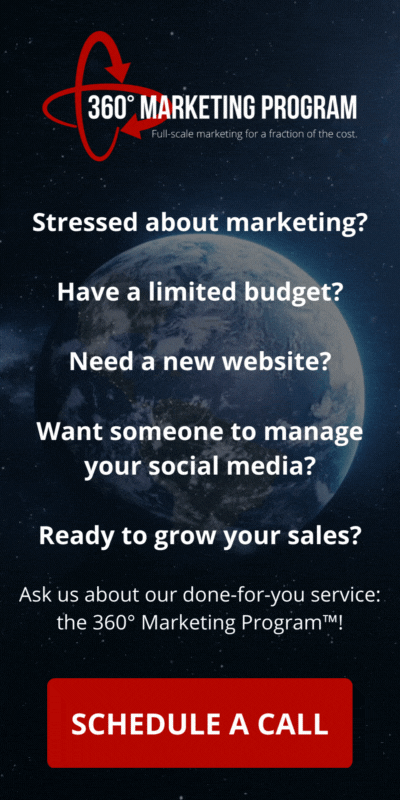As a small business owner, you know the importance of marketing your products and services. But with limited resources and budget, you may be feeling overwhelmed and unsure of how to get started. DIY marketing is a great way for small businesses to get the word out about their business without breaking the bank.
In this blog post, we’ll discuss what DIY marketing is, the benefits of DIY marketing for small businesses, how to create a successful DIY marketing plan, tips for engaging your audience, and tools for measuring your marketing results.
What is DIY Marketing?
DIY marketing is a type of marketing strategy where a business takes the initiative to create, implement, and execute their own marketing plan. This can include activities such as creating content, crafting social media campaigns, and setting up advertising campaigns. DIY marketing allows small businesses to save money on marketing while still providing the same results as professional marketing firms.
The key to successful DIY marketing is understanding the basics of marketing. Knowing the fundamental principles behind marketing is essential for creating a successful DIY marketing plan.
Benefits of DIY Marketing for Small Businesses
DIY marketing offers a number of benefits for small businesses. Here are some of the biggest benefits of DIY marketing:
- Cost-effective: DIY marketing is much more cost-effective than hiring a professional marketing firm. You don’t need to worry about paying for expensive services or materials.
- Control: With DIY marketing, you have full control over your marketing efforts. This allows you to tailor your marketing strategy to your specific needs and goals.
- Flexible: DIY marketing is a great option for businesses that are just starting out or have limited resources. You can choose which activities to focus on and adjust your strategy as needed.
How to Start a DIY Marketing Plan for Your Small Business
Creating a DIY marketing plan is the first step in launching a successful marketing campaign. Here are some steps to help you get started:
- Set objectives: Before you can start creating a plan, you need to determine your goals. What do you want to achieve with your marketing efforts? This will help you create a plan that is tailored to your specific needs.
- Identify your target audience: Knowing who your ideal customer is will help you craft content and campaigns that are more likely to engage them.
- Research your competition: Knowing what your competitors are doing can help you come up with more effective strategies.
- Choose your channels: Once you know who your target audience is, you can decide which channels you’ll use to reach them. This could include social media, email, or even traditional advertising.
- Create content: Content is king when it comes to marketing, so be sure to create content that is relevant to your target audience.
Elements of a Successful DIY Marketing Plan
Creating a successful DIY marketing plan involves more than just creating content and setting up campaigns. Here are some other elements you should consider when creating a successful DIY marketing plan:
- Branding: Your brand is an essential part of your marketing efforts. Make sure your brand messaging is clear and consistent across all channels.
- Engagement: Engaging with your audience is key to building relationships and driving conversions. Make sure to respond to comments and questions on social media and other channels.
- Analytics: Measuring your results is essential for understanding what’s working and what’s not. Utilize analytics tools to track your progress and make adjustments as needed.
Creating Your DIY Marketing Budget
Creating a budget for your DIY marketing plan is essential for success. Here are some tips for creating a budget:
- Set a realistic budget: It’s important to set a realistic budget that you can stick to. Determine how much you can afford to spend each month and adjust as needed.
- Prioritize your spending: Prioritize your spending to ensure that you’re investing in the most important activities.
- Track your spending: Tracking your spending will help you ensure that you’re staying within your budget.
Tips on Engaging Your Audience
Engaging with your audience is one of the most important aspects of any marketing plan. Here are some tips for engaging your audience:
- Use visuals: Visuals are a great way to draw attention and engage your audience.
- Be responsive: Make sure to respond to comments and questions on social media and other channels. This will help build relationships with your audience.
- Be authentic: Authenticity is key when engaging with your audience. Make sure to be honest and genuine in all of your interactions.
Tools to Help You with DIY Marketing
There are a number of tools that can help you with your DIY marketing efforts. Here are some of the most popular tools:
- Social media management tools: These tools can help you manage all of your social media accounts in one place.
- Content marketing tools: Content marketing tools can help you create and distribute content more efficiently.
- Analytics tools: Analytics tools can help you track and measure the performance of your marketing efforts.
- Email marketing tools: Email marketing tools can help you automate your email campaigns and measure their success.
Examples of Successful DIY Marketing Strategies
To get inspired, take a look at some successful DIY marketing strategies that other small businesses have used:
- Create content: Content is an essential part of any marketing plan. Try creating content such as blog posts, videos, or podcasts that are relevant to your target audience.
- Utilize influencers: Influencers can be a great way to reach a larger audience. Look for influencers in your industry who have an engaged following.
- Leverage local networks: Local networks can be an effective way to reach a targeted audience. Look for local groups, organizations, and events that you can participate in.
Tips on Measuring Your DIY Marketing Results
Measuring your results is essential for understanding what’s working and what’s not. Here are some tips for measuring your DIY marketing results:
- Track your website traffic: You can use analytics tools to track how much traffic your website is getting and where it’s coming from.
- Monitor social media engagement: Monitor the engagement on your social media accounts to see how people are responding to your content.
- Analyze your email campaigns: Analyze the performance of your email campaigns to see what type of content is resonating with your audience.
- Track conversions: Tracking conversions can help you understand which activities are driving the most sales.
Conclusion: How to Make DIY Marketing Work For Your Small Business
DIY marketing is a great way for small businesses to get the word out about their business without breaking the bank. To make DIY marketing work for your small business, be sure to set realistic goals, identify your target audience, research your competition, choose your channels, create content, brand your business, engage with your audience, and track your results. If you need help with your small business marketing efforts, contact Cassus Media to learn more about how Cassus CRM™ can help your business grow.
With Cassus CRM™, you can manage all of your marketing activities in one place, track your results, and engage with your customers in a more meaningful way.
DIY marketing is a great way for small businesses to save money on marketing while still providing the same results as professional marketing firms. With the right strategies and tools, you can create a successful DIY marketing plan that will help your business reach its goals.


